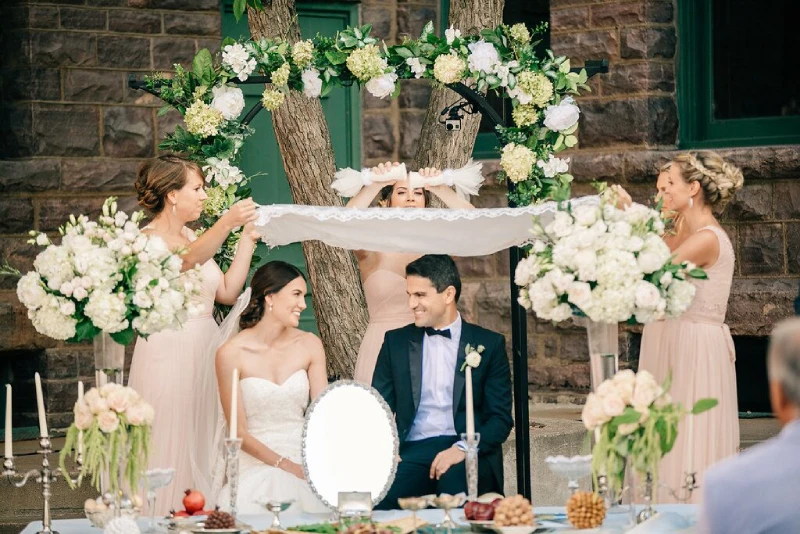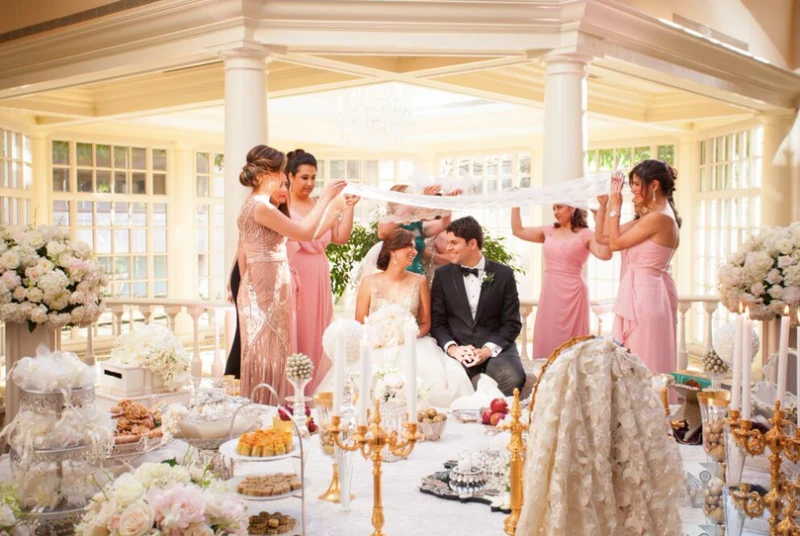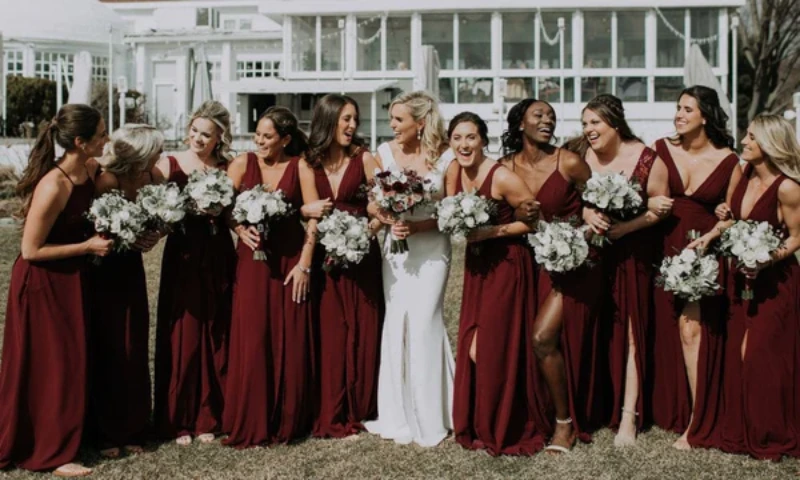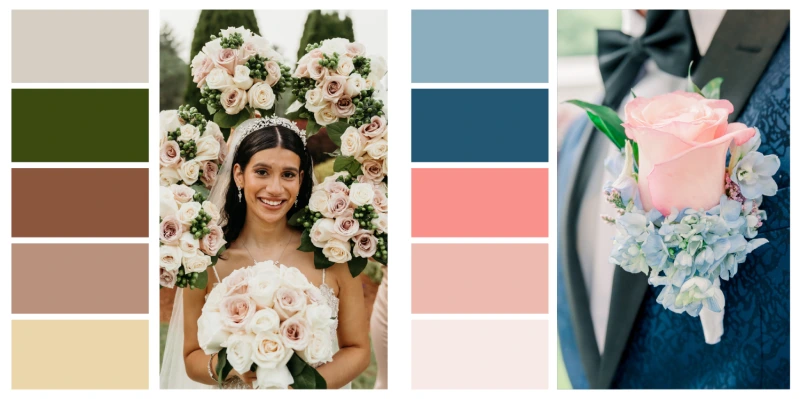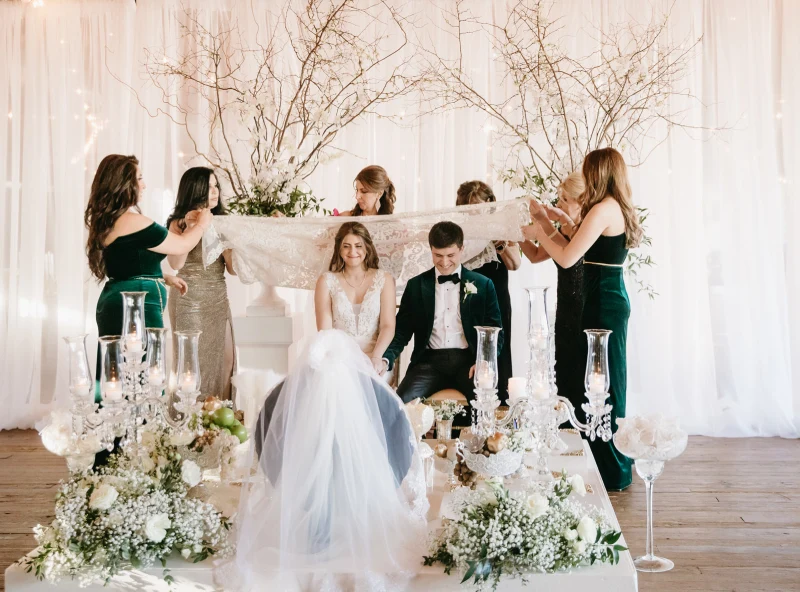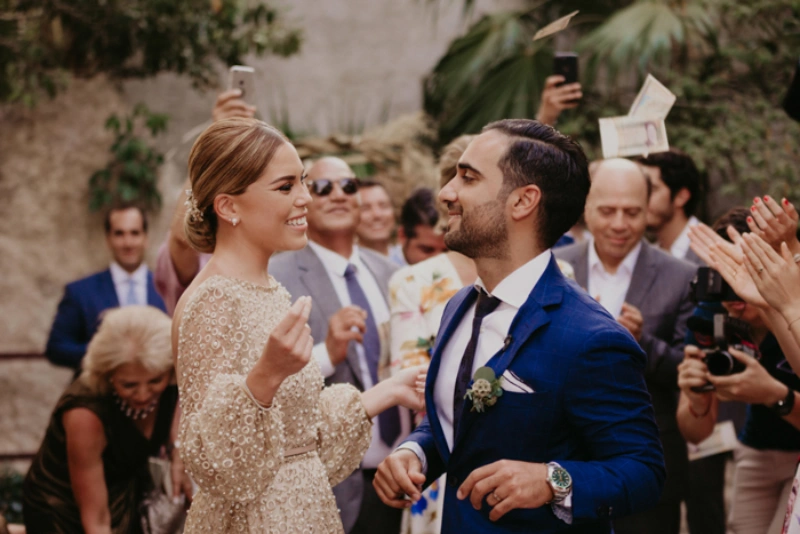As 2025 unfolds, Persian weddings continue to embrace tradition while incorporating modern elegance, especially when it comes to wedding dresses. The choice of color plays a pivotal role in reflecting the beauty and significance of these ceremonies, with each hue carrying its own symbolism. Whether you are a bride looking to stand out or a guest aiming to honor the occasion, understanding the best colors for a Persian wedding dress is essential. From vibrant jewel tones that evoke luxury to soft pastels that whisper romance, this year’s trends promise a stunning array of options. Join us as we explore the most captivating colors that are set to make waves in 2025, ensuring that every dress is not only a piece of art but also a celebration of rich cultural heritage. Let’s delve into a world where colors tell stories and transform dreams into reality.
The Significance of Color in Persian Weddings
Persian weddings are renowned for their opulence and grandeur, and the color of the wedding dress plays a crucial role in this splendor. In Persian culture, colors are not merely visual aesthetics; they are imbued with deep symbolic meanings that convey messages, emotions, and cultural values. The color chosen for a wedding dress can reflect the bride’s personality, her family’s heritage, and the union’s auspiciousness. Traditionally, Persian weddings are vibrant affairs, with each hue representing different virtues such as purity, joy, prosperity, and love. This rich tapestry of colors is designed to create an atmosphere of celebration and reverence.
The significance of color in Persian weddings also extends to the overarching themes of the ceremony. For instance, the use of certain colors can denote the time of year, the specific customs being observed, and the regional traditions that might be integrated into the event. Colors like red, gold, and green are often associated with happiness and fertility, making them popular choices for wedding attire. This multifaceted approach to color is a testament to the cultural depth and historical significance embedded in Persian weddings. It is a practice that has evolved over centuries, reflecting the dynamic interplay between tradition and modernity.
Moreover, the choice of color can also be a personal statement by the bride. In today’s globalized world, many brides seek to blend traditional Persian elements with contemporary fashion trends. This fusion allows for a unique expression of individuality while still honoring cultural heritage. By carefully selecting the color of her wedding dress, a bride can pay homage to her roots while also showcasing her personal style and preferences. This blend of old and new creates a harmonious balance that resonates with both the past and the present, making the wedding day even more memorable.
Trends in Persian Wedding Dress Colors for 2025
As we step into 2025, the world of Persian wedding fashion is witnessing an exciting evolution in color trends. This year, a blend of timeless elegance and modern sophistication is set to dominate the bridal scene. Jewel tones are making a significant comeback, with shades like emerald green, sapphire blue, and ruby red taking center stage. These rich, vibrant colors exude luxury and regality, perfectly complementing the grandeur of Persian weddings. They are ideal for brides who wish to make a bold statement while still embracing traditional aesthetics.
Pastel hues are another trend gaining momentum in 2025. Soft colors like blush pink, lavender, and mint green are becoming increasingly popular for their romantic and ethereal qualities. These delicate shades offer a fresh, modern twist on the traditional wedding palette, appealing to brides who prefer a more understated elegance. The beauty of pastels lies in their versatility—they can be paired with metallic accents or bold accessories to create a balanced and visually captivating ensemble.
Metallics are also making waves this year, with gold and silver leading the charge. These shimmering tones add a touch of glamour and sophistication to any wedding dress. Gold, in particular, holds a special place in Persian culture, symbolizing wealth, success, and happiness. Incorporating metallic elements into the wedding dress can elevate the overall look, making the bride shine even brighter on her special day. Whether through intricate embroidery, beading, or fabric choices, metallics are sure to leave a lasting impression.
Traditional Colors for Persian Wedding Dresses
Traditional colors have always held a place of honor in Persian weddings, each imbued with its own unique symbolism and cultural significance. Red is a quintessential color, symbolizing love, passion, and joy. It is often seen in bridal attire as well as in various elements of the wedding decor. The vibrant hue of red is believed to bring good fortune and happiness to the newlyweds, making it a perennial favorite among Persian brides. Red’s boldness and vibrancy set the tone for the celebration, encapsulating the energy and excitement of the occasion.
Gold is another traditional color that is deeply rooted in Persian wedding customs. Representing wealth, prosperity, and success, gold is often used in wedding dresses, accessories, and decor. The shimmering quality of gold adds a layer of opulence to the wedding ensemble, making the bride look resplendent. Gold can be incorporated in various ways, from subtle embroidery and beading to more pronounced metallic fabrics. Its versatility and timeless appeal make it a staple in Persian wedding fashion.
Green, symbolizing fertility, growth, and harmony, is also a cherished color in Persian weddings. This color is often associated with new beginnings and the promise of a fruitful union. Brides who choose green for their wedding dress are embracing a color that is both traditional and meaningful. Green can range from deep emerald shades to lighter, more pastel tones, offering a spectrum of options for brides to consider. This color’s natural beauty and positive connotations make it a popular choice for those looking to honor their cultural heritage.
Popular Modern Color Palettes
While traditional colors continue to hold their charm, modern brides are increasingly exploring contemporary color palettes to add a unique touch to their wedding attire. One of the emerging trends in 2025 is the use of earthy tones such as terracotta, olive green, and burnt orange. These colors offer a connection to nature and exude a sense of warmth and authenticity. Earthy tones can create a harmonious and grounded aesthetic, ideal for outdoor or rustic-themed weddings. They provide a refreshing departure from the more conventional color choices, appealing to brides who seek a distinct and personalized look.
Another modern color palette gaining popularity includes muted, dusty shades like mauve, sage, and dusty blue. These colors are subtle yet sophisticated, perfect for brides who prefer an understated elegance. The muted tones can be beautifully complemented by metallic accents or vibrant florals, creating a balanced and aesthetically pleasing ensemble. This palette is ideal for modern Persian weddings that aim to blend tradition with contemporary chic.
Finally, the use of bold and unconventional colors is becoming a trend among daring brides. Colors like deep plum, midnight blue, and even black are making their way into the bridal scene. These dramatic hues offer a striking contrast to traditional wedding colors, allowing brides to make a bold fashion statement. While unconventional, these colors can still be infused with traditional elements through intricate embroidery, beading, and luxurious fabrics. This combination of the bold and the traditional creates a unique and memorable bridal look.
How to Choose the Right Color for Your Wedding Dress
Choosing the right color for your wedding dress is a deeply personal decision that requires careful consideration of various factors. One of the primary considerations is the bride’s skin tone. Certain colors may enhance the natural glow of the skin, while others may not be as flattering. For instance, jewel tones like emerald green and ruby red tend to complement deeper skin tones, while pastel shades like blush pink and mint green often look beautiful on fairer complexions. Understanding how different colors interact with your skin tone can help you make a more informed choice.
The wedding theme and venue also play a significant role in color selection. A traditional indoor wedding might call for classic colors like red or gold, while an outdoor garden wedding might be better suited to earthy tones or pastels. The season can also influence color choices; warmer hues may be preferred for autumn or winter weddings, while cooler, lighter colors might be more fitting for spring or summer ceremonies. Aligning the color of your dress with the overall theme and setting of the wedding ensures a cohesive and harmonious aesthetic.
Personal preference and cultural significance are, of course, paramount. Reflect on the colors that resonate with you and what they symbolize in Persian culture. Perhaps there is a family tradition or a particular color that holds sentimental value. Incorporating these elements into your decision can make the dress even more meaningful. It is also essential to consider how comfortable you feel in the color—you should feel confident and radiant in your wedding dress. Taking the time to try on dresses in various colors and observing how each one makes you feel can be incredibly helpful in making your final decision.
The Role of Fabrics in Color Selection
The fabric of the wedding dress can significantly influence the appearance and perception of the color. Different fabrics reflect light in unique ways, which can alter how a color looks in various lighting conditions. For example, satin and silk have a lustrous finish that can make colors appear richer and more vibrant. These fabrics are excellent choices for jewel tones and metallics, as they enhance the depth and luxury of the colors. On the other hand, matte fabrics like chiffon and tulle offer a softer, more understated look, making them ideal for pastels and muted shades.
Texture also plays a crucial role in how a color is perceived. Embellishments such as lace, embroidery, and beadwork can add dimension and complexity to the color, creating a more intricate and visually captivating dress. For instance, a red dress with gold embroidery can offer a stunning contrast that highlights both colors beautifully. Similarly, a pastel dress with delicate lace details can create a romantic and ethereal effect. Understanding how different textures and embellishments interact with the color can help you select a fabric that enhances the overall design of the dress.
It is also important to consider the weight and drape of the fabric. Heavier fabrics like brocade and velvet can hold more saturated colors and intricate designs, making them suitable for more formal and traditional weddings. Lighter fabrics like organza and georgette, however, offer a more fluid and graceful movement, ideal for modern and outdoor weddings. The choice of fabric can affect not only the visual appeal of the color but also the comfort and practicality of the dress. By carefully selecting the fabric, you can ensure that the color of your wedding dress is showcased in the best possible light.
Complementary Colors for Bridesmaids and Groomsmen
Choosing complementary colors for bridesmaids and groomsmen is essential to create a cohesive and visually appealing wedding party. The colors should harmonize with the bride’s dress while also reflecting the overall theme and aesthetic of the wedding. One approach is to use different shades of the same color family. For example, if the bride’s dress is emerald green, bridesmaids can wear lighter shades of green like mint or sage, and groomsmen can incorporate green accents such as ties or pocket squares. This creates a unified look while allowing each member of the wedding party to stand out in their own right.
Another option is to choose complementary colors that enhance the primary color of the bride’s dress. For instance, if the bride’s dress is a deep ruby red, bridesmaids can wear gold or champagne, and groomsmen can opt for neutral tones with red accents. This combination creates a rich and elegant palette that is visually striking and harmonious. Using complementary colors allows for a diverse yet coordinated look, ensuring that the wedding party looks cohesive and well put together.
It is also important to consider the individual preferences and complexions of the bridesmaids and groomsmen. While the goal is to create a unified look, it is essential that each member of the wedding party feels comfortable and confident in their attire. Offering a range of colors within the chosen palette or allowing for variations in style can help achieve this balance. By carefully selecting complementary colors, you can ensure that the entire wedding party looks stunning and that the overall aesthetic of the wedding is beautifully cohesive.
Cultural Influences on Color Choices
Cultural influences play a significant role in the color choices for Persian wedding dresses. Persian culture is rich with symbolism and traditions, many of which are reflected in the colors used in weddings. Historical references, regional customs, and family heritage can all influence the colors chosen for the wedding dress. For instance, certain regions in Iran may have specific color preferences based on local traditions and beliefs. Understanding these cultural nuances can provide valuable insights into the most appropriate and meaningful color choices for the wedding dress.
Moreover, the integration of modern fashion trends with traditional Persian elements is a growing trend among contemporary brides. This fusion allows for a unique expression of cultural identity while embracing global influences. For example, incorporating modern color trends like pastels and metallics into a traditional Persian wedding dress can create a stunning blend of old and new. This approach not only honors cultural heritage but also allows the bride to showcase her personal style and individuality. The result is a wedding dress that is both timeless and contemporary.
Religious beliefs can also influence color choices in Persian weddings. Certain colors may hold specific religious significance or be associated with particular rituals and customs. For example, white is often associated with purity and is commonly used in religious ceremonies. Understanding the religious context and its impact on color choices can help ensure that the wedding dress is respectful and aligned with the couple’s beliefs. By considering cultural and religious influences, brides can make more informed and meaningful choices for their wedding dress colors.
Tips for Accessorizing Your Wedding Dress Color
Accessorizing your wedding dress is an art that can enhance and complement the chosen color, adding an extra layer of elegance and sophistication to your bridal look. One of the key tips for accessorizing is to choose jewelry that complements the color of your dress. For example, gold jewelry pairs beautifully with warm tones like red and gold, while silver or platinum jewelry is ideal for cooler tones like blue and green. Gemstones can also add a pop of color and sparkle, enhancing the overall aesthetic of the dress. Selecting jewelry that harmonizes with the dress color ensures a cohesive and polished look.
Shoes are another important accessory that can either match or contrast with the wedding dress color. For a seamless look, choose shoes in a similar shade to the dress. Alternatively, opting for metallic or neutral-colored shoes can provide a subtle contrast that does not overpower the dress. Comfort is also crucial, especially if you plan to wear the shoes for an extended period. Ensuring that your shoes are both stylish and comfortable will allow you to enjoy your special day without any discomfort.
Veils and headpieces can also be used to enhance the color of your wedding dress. A veil with subtle embroidery or beading that matches the dress color can create a harmonious look. Alternatively, a contrasting headpiece can add a unique and eye-catching element to your ensemble. For instance, a gold headpiece can beautifully complement a red or green dress, adding a touch of regal elegance. By thoughtfully selecting accessories, you can enhance the beauty of your wedding dress and create a stunning and memorable bridal look.
Conclusion: Embracing Tradition and Modernity in Color Choices
In conclusion, the choice of color for a Persian wedding dress in 2025 represents a beautiful blend of tradition and modernity. From the rich symbolism of traditional colors like red, gold, and green to the contemporary elegance of jewel tones, pastels, and metallics, there is a vast array of options for brides to explore. The significance of color in Persian weddings goes beyond aesthetics, reflecting cultural values, personal preferences, and the unique personality of the bride. By understanding the historical and cultural context, as well as considering modern trends, brides can make informed and meaningful choices for their wedding dress.
The role of fabrics in color selection, the importance of complementary colors for the wedding party, and the influence of cultural and religious beliefs all contribute to the final decision. Accessorizing the wedding dress with thoughtful and harmonious elements can further enhance the chosen color, creating a cohesive and stunning bridal look. The fusion of traditional Persian elements with contemporary fashion trends allows for a unique and personalized expression of style, making the wedding day even more special.
Ultimately, the best color for a Persian wedding dress in 2025 is one that resonates with the bride, honors her heritage, and brings her vision to life. By embracing both tradition and modernity, brides can create a wedding dress that is not only a piece of art but also a celebration of love, culture, and individuality. As the trends in wedding dress colors continue to evolve, the timeless beauty and significance of color in Persian weddings remain a constant source of inspiration and joy.

